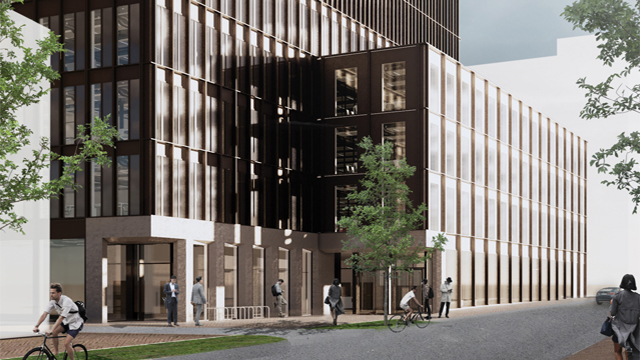CVAs in a retail environment… do they really address the insolvency issue?
Deborah Parker,
Real Estate Advisory, PwC
The retail environment has been tough and we have already seen the weakest financial performers fall by the wayside, predominantly as a result of high debt levels in a low-sales environment. Consequently, we have seen companies such as Travelodge, Fitness First and JJB adopting insolvency tools to save the viable part of their businesses.
A company voluntary arrangement is an insolvency process that has attracted attention in recent years, particularly from those who can be adversely affected by the outcome, such as landlords. It is a formal procedure that enables a company to agree with its creditors a compromise in satisfaction of its debts. Broadly, to be approved, CVA proposals require 75% or more in value of the company’s creditors to vote in favour.
There are two issues:
• The process could be viewed as unfair and is not straightforward. For the landlord with a small portfolio by value, it can appear weighted in favour of the institutional landlord or the property company that has a greater voting power.
• The critical issue must be whether a CVA will properly address the historic issues and focus on improving the underlying performance, such that a viable entity is created. JJB underwent not one but two CVAs in the space of 24 months, shedding nearly 200 stores, or more than 50% of its original portfolio, by the second CVA. One will never know whether a viable entity capable of long-term trading could have been created if the first CVA had taken a more radical/aggressive approach to the number of stores required in the portfolio, which may have resulted in a better outcome for the supporting stakeholders.
One thing is for sure: landlords receiving a CVA proposal should get sound advice on the business plan of the company to challenge and shape the CVA proposal that is eventually put in front of them to vote on – especially as compromised creditors tend to take the initiative in most distressed situations.
But even by doing this, one wonders whether the voting structure has not moved with the times and no longer allows companies to restructure sufficiently to survive – perhaps it is time for the insolvency profession to review the current practice.
A new age for freedom of information
Violet McDonald,
Real estate investment analyst (Asia Pacific),
Standard Life Investments
The Information Age is about convenience and being unrestricted by time and place.
Globally, internet users have the convenience of ordering goods any time from any place where there is connectivity for their devices.
Consumers research product details, compare prices and share the experiences via social media, regardless of timezone, language or place. We can buy directly from company websites and choose from convenient delivery options.
Payment options continue to grow, from PayPal to pay-by-tweet. Macro deterrents have been overcome: Australian consumers order goods from other countries, taking advantage of currency arbitrage.
But what does that mean for real estate? The Information Age is changing how we spend our free time, interact and shop, whether in cyberspace or at the shopping mall. Leading landlords and retailers are stepping up efforts to embrace the change, paying close attention to design and layout, focusing on convenience, providing Wi-Fi and facilities such as self-service kiosks.
Shops are becoming larger, fewer and more focused. Consumers still need to touch and feel, but shopping is about entertainment.
Obsolete high streets may become the new residential neighbourhoods, located close to the mall or transport nodes, drawing in the ageing population with spending power and a desire to be near facilities. In essence, shop units act as distribution units, replacing previous warehouse-to-doorstep delivery models.
The Information Age is changing the real estate landscape and it is an opportunity not to be missed.
Keep your customers happy
Adrian Penfold,
Head of planning, British Land
Retailers are no strangers to change. Supermarkets, barcodes, Sunday opening – the list is long. Yet the changes they face today, caused by the digital revolution, promise to be some of the most profound.
The ability to shop any time, any place, anywhere, and to have a world of choice at one’s fingertips, poses a new challenge for retailers’ stores, and the communities that depend on them. How should they respond?
Our answer, as the UK’s largest listed retail landlord, is one that successful retailers know well: don’t simply follow customers, but anticipate their needs. Convenience, choice and price are now the very basic requirements. Customers have set the bar much higher: they want a great experience.
Shopping must be an enjoyable, social activity and one that reflects the seamless path that consumers travel, many times a day, between their online and offline worlds.
And, along with the range of other physical leisure experiences – cinemas, bars restaurants – shopping must put a smile on the customer’s face.
This is a lesson all retailers, landlords and communities need to heed. High streets have a future, so long as retailers, local authorities, and shop owners, work together to create an environment that is fun to shop in. Build a place where they want to be, and the customers will come.
Retail stays strong despite the headlines
Charles Miller, development director,
NewRiver Retail
The recent demise of a handful of the UK’s favourite high street retailers has made startling headlines. The man on the omnibus could not be blamed for believing the British retail sector is dead on its feet. However, this is far from the case.
Despite the negative headlines, the sector has proved to be hardy and resilient. Retailing is a vast and diverse industry that is hugely important – indeed, essential – to the UK economy and remains one of the largest private sector employers. Contrary to the doom-sayers, there is a raft of world-class retail operators thriving in the UK, delivering results, increasing sales, expanding their retail footprint and future-proofing their businesses by investing in innovation.
At a macro level, retailers are achieving robust financial results, supported by a vote of confidence from investors. In 2012, the FTSE 350 General Retailers outperformance delivered 32.45%, compared with the FTSE 100’s comparatively meagre 5.83%. The value retail sector is particularly resilient. Poundland recently opened its 400th store and has plans to open a further 600. In 2012, H&M increased its UK sales by 9%; TK Maxx by 10.7%. Town centres recorded the lowest fall in shopper numbers, down only 0.5% year-on-year versus a 1% decline in out-of-town retail over Christmas. Aldi plans to open another 40 UK stores, with Lidl planning to open 50 stores, creating more than 1,000 jobs.
Success in town centres is complex and requires all stakeholders – landlords, retailers and local authorities – to be fully engaged in the town’s strategic planning. Consumer needs must be matched to the location to reduce the increasing polarisation between prime centres and convenience-led town centres. Both have a place, although with a formula dictated by core-time and core-money, non-discretionary retail is coming up trumps.
Within the formula, high street success depends on whether the offer is fit for purpose, answers the market needs and adapts to consumer change. The recent administrations failed to evolve and became over-burdened by competition and diminishing demand.
However, the data shows the number of retail administrations in 2011 represented just 0.6% of the market; and during only one year in the last 40 has the annual total retail spend been negative.
Interestingly, Primark, which reported a 9% rise in like-for-like sales over Christmas, continues to invest in bricks and mortar and rejects online because the returns are too low for its model.
The fact is that the UK retail landscape, far from ailing, is dynamic, vibrant, and remains a highly resilient asset class within the commercial property sector.
The high street: Armageddon or emergency intervention?
Tim Hance, partner, Prime Retail
Over the past few months, we have seen the shutters come down, either partially or fully, on such well-known high street brands as Stead & Simpson, Blockbuster, HMV and Jessops. With few bright spots in a generally flat Christmas trading period, there is a real fear that in addition to the 15,000 or so retail jobs lost, many more will follow.
While the much-heralded demise of these brands was no real surprise, cumulatively it has had a big impact on the retail property landscape, which was already struggling due to the imbalance between lack of retailer demand and, in some towns, significant supply. Emergency intervention by the government, local authorities, landlords and shoppers is required if we are to save some, if not all, high streets from irreversible damage.
The government must act swiftly to lower retailers’ rates liabilities, local authorities should remove charges for town-centre car parks and landlords need to accept that tenants now require flexibility on leases as income and vitality are more important than short-term capital value.
Internet shopping is a major factor and it is ironic that the brand leader Amazon is a company that pays no tax in the UK. The introduction of a “click tax” on internet shopping would redress some of the balance.
Removing charges from local authority car parks in town centres would have the dual effect of forcing private car park operators to reduce or even remove charges and allow the high street to compete with retail parks where parking is generally free. Although, in these austere times, local authorities need revenue, the irretrievable loss of their town centre shopping facilities is hopefully enough incentive for them to remove parking charges completely.
The government must also play its part. As well as cutting rates liabilities for retailers in the most affected high streets, it should also consider introducing retail enterprise zones in an attempt to halt the decline.
Equally important is the need to re-educate the customer on the richness of the shopping offer available to them before it is too late. If we lose our “save the high streets” battle to regional shopping centres, supermarkets, retail parks and internet retailing, our town centres will be gone forever. The retailing landscape and heritage will be all the poorer for it.
Market is flat, but not down-at-heel
The early part of this year has seen headline-grabbing retail failures leading some to foretell the death of the high street. But really none of them came as a surprise to anyone who is keeping even half an eye on the retail economy, writes Paul Langston, consulting partner, location strategy, CACI.
The clear reality is that the market is flat, likely to remain so for the foreseeable future, and that the share of all retail sectors moving online is only going to grow in the years ahead.
A detailed analysis of the latest retail performance figures shows that despite this backdrop, there are similar numbers of successes and failures. While the success stories don’t match the heady days of pre-recession retail growth, that is a fact of the new reality, and investors and landlords need to “recalibrate” their expectations in line with this new inevitability.
The recent big-name failures have been mortally wounded by one, and often more, of the following factors outlined in the panel on the right that has affected them more than the pervading market conditions.
With regard to the latter case, I would argue that under-investment in omni-channel alone has not yet been the principal reason for any of the major casualties. Most retailers are just about keeping pace with the need to open alternative channels, relative to the online risks in their market sector.
While some might argue that the likes of Comet, Blockbuster and HMV could have moved faster, the reality was that they were hit more by a combination of the first and second conditions noted in the panel, and that there simply wasn’t room for them in the new market, almost irrelevant of how much they could have invested.
At CACI we track the Retailer Health of more than 750 multiple brands to help us both advise centre managers with their letting strategy and evaluate the strength of destinations for retailers growth and optimisation strategies. While we never like to say “told you so” when a retailer fails, we can say that the vast majority of recent failures fell into the “weak” and “at risk” categories. So, yes, we saw them coming.We are inevitably going to see retailers fail in the years and months ahead. These will occur where the pressures outlined above overcome what were often once solid retail businesses. I do not want to create a self-fulfilling prophecy by naming the retail fascias that remain in these “weak” and “at risk” zones. However, measuring the combined risk of the above factors means that we are unlikely to be too surprised when the next retailers fall by the wayside.
The good news story, which so often gets overlooked, is that we have a similar-sized list of retailers that we have quantified and categorised as either “strong” or “very strong”. This list includes retailers as disparate as Cath Kidston, Bright House, Whistles, Hobbycraft, Evans Cycles and Pets at Home.
However, Primark (Very Strong) and WHSmith (Strong) are fascinating examples of the complexities of retail which mean that headlines about the state of the market are inevitably wide of the mark. Almost uniquely, Primark has no transactional web presence and a few years ago WHSmith was looking over-spaced and irrelevant across a set of categories that seemed to be heading for high street armageddon.Yet Primark’s differentiation means it continues to be a stellar growth story. Meanwhile, while WHSmith’s like-for-likes may not be a good news story, its continued steady growth in profits shows how good management and merchandising in a controlled realignment to today’s high street can result in a post-recession success story. The challenge for the property market is the two-way link between retailer health and centre health. Too many unhealthy retailers or vacancies in a retail centre leave the centre vulnerable to decline.
Yet retailers need to realign their portfolios to maintain their retail health, avoiding over-exposure to declining/ “unhealthy”, as well as over-rented schemes. Inevitably, this will result in ongoing consolidation of retailers and retail destinations and we all need to plan to make sure that outlets and property investments are in the right place for future success.
FAILURE FACTORS
Technology shift
• Both in terms of their core products being particularly attractive online and, in some cases, the products they sell being made obsolete by new digital download formats
Category killer
• The presence of a dominant competing player in the retailer’s sector (whether bricks, clicks or omni-channel)
Retail centre consolidation
• Leaving retailers with too many stores in the wrong locations as increasing shares of offline spend head towards the healthiest retail destinations
Commoditisation
• With customers unable to discern a compelling reason to visit a retailer’s stores
Under-investment in omni-channel
• Over-reliance on stores at the expense of internet and mobile platforms Consolidation of Offline spend to healthiest retail centres
| Centre health grade | Cumulative number of centres | Cumulative share of spend to centres |
|---|---|---|
| A | 116 | 24% |
| B | 399 | 44% |
| C | 1,437 | 68% |
| D | 2,690 | 86% |
| E | 4,194 | 100% |
What is the secret to retail success?
Laurent Morel, Klépierre
If one of Klépierre’s shopping malls sold crystal balls to look into the future then I am sure there would be never-ending queues outside. Knowing precisely what the world will look like in five, 10 or 20 years’ time would make all our lives much simpler.
The challenge for retailers, and the same challenge for shopping mall owner-managers like Klépierre, is being constantly at the forefront of customer trends. After all, if there is one thing we can guarantee about the future it is that providing customers with what they want will always win the day. This is why being proactive is key.
To be successful in retail, operators have to anticipate what people want, when and where they want it, and what they may want next. We have to detect the faint signals of future trends and be willing to embrace them at an early stage. This is how we can go further for customers; addressing their needs and exceeding their expectations.
It means being creative and ready to adapt, constantly refining the retail mix in our shopping centres but also revisiting the organisation and design of our malls, rejuvenating the ambiance and selecting innovative brands ahead of the market.
Knowing our market
We cannot rely on responding to customer demand. By the time we do, it is probably too late. With 1.5bn customers a year passing through our doors we have a wealth of data about our shoppers’ experiences, behaviours and opinions. We combine this with the research undertaken by our teams together with the close co-operation we have with retailers and brands. We are always asking ourselves what the next big thing is, as well as the next dozen or so small things that will make a difference in our malls.
The right environment
We are always focused on enhancing the physical experience for customers and making the shopping trip more aspirational. We bring more amenities, more events and more fun into our malls as well as an increased use of new technologies. We need to talk to shoppers through mediums they understand, including mobile applications. The objective is to create the best environment where customers and retailers meet.
Hospitality mentality
Years ago, people could be forgiven for thinking that the “customer experience” was the job of retailers alone; mall owners simply provided the signposting, cleaned the surfaces, emptied the bins and took rent at the beginning of the quarter. Even if that was the case for some malls, those days are long gone.
The appointment of one our most recent shopping mall managers offers a glimpse into our thinking. Notably, he has a hospitality background and most recently managed a large hotel. Good hotels demonstrate some of the best examples of customer relations and we want that service to exist in every one of our malls. Our managers are spending more time on the shopping mall floor. They are greeting customers and getting a greater feel for what the customer is experiencing.
The ultimate experience
Modern shopping malls must be places where brands can live. As well as permanent stores, retailers want their brands to be experienced through pop-up shops, events and social media campaigns. It is our job to provide the right environment for brands and retailers to showcase themselves and build one-to-one relationships with shoppers. If we can deliver this for today’s customers while planning for tomorrow’s we’ll be in good stead for the future.
Laurent Morel is chairman of the executive board of Klépierre. Klépierre is a leading player in retail real estate in Europe, which combines development, rental, property and asset management skills.











